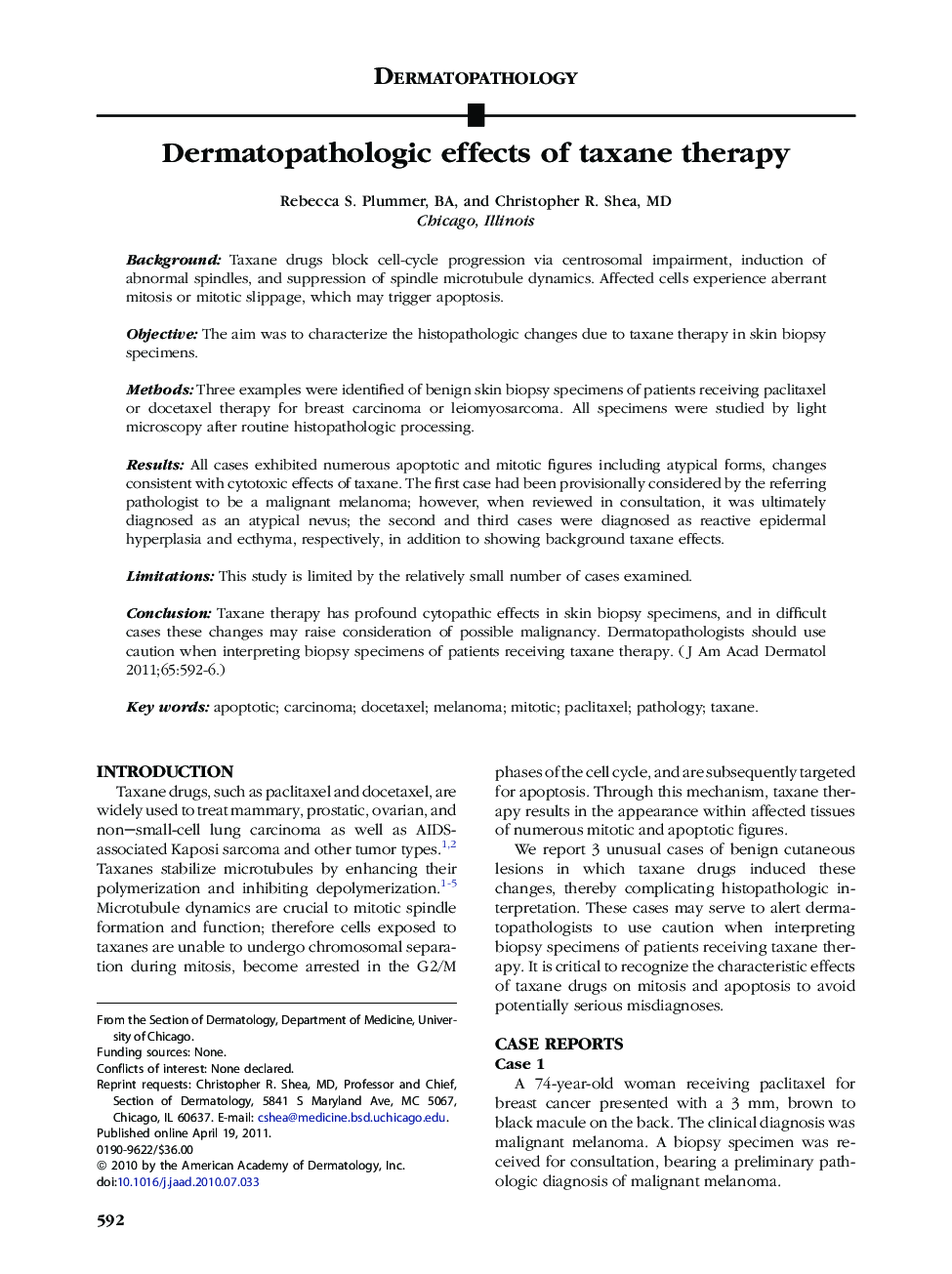| Article ID | Journal | Published Year | Pages | File Type |
|---|---|---|---|---|
| 3207842 | Journal of the American Academy of Dermatology | 2011 | 5 Pages |
BackgroundTaxane drugs block cell-cycle progression via centrosomal impairment, induction of abnormal spindles, and suppression of spindle microtubule dynamics. Affected cells experience aberrant mitosis or mitotic slippage, which may trigger apoptosis.ObjectiveThe aim was to characterize the histopathologic changes due to taxane therapy in skin biopsy specimens.MethodsThree examples were identified of benign skin biopsy specimens of patients receiving paclitaxel or docetaxel therapy for breast carcinoma or leiomyosarcoma. All specimens were studied by light microscopy after routine histopathologic processing.ResultsAll cases exhibited numerous apoptotic and mitotic figures including atypical forms, changes consistent with cytotoxic effects of taxane. The first case had been provisionally considered by the referring pathologist to be a malignant melanoma; however, when reviewed in consultation, it was ultimately diagnosed as an atypical nevus; the second and third cases were diagnosed as reactive epidermal hyperplasia and ecthyma, respectively, in addition to showing background taxane effects.LimitationsThis study is limited by the relatively small number of cases examined.ConclusionTaxane therapy has profound cytopathic effects in skin biopsy specimens, and in difficult cases these changes may raise consideration of possible malignancy. Dermatopathologists should use caution when interpreting biopsy specimens of patients receiving taxane therapy.
